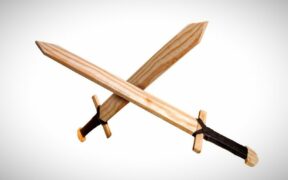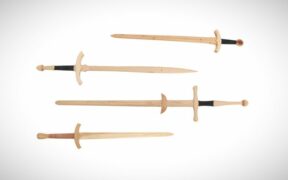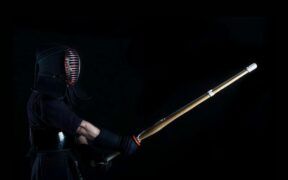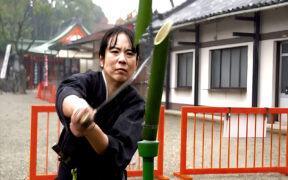Our content features commercial links to our products, committed to transparent, unbiased, and informed editorial recommendations. Learn More
Best Bokken Swords for Martial Arts
NO AI USED This Article has been written and edited by our team with no help of the AI
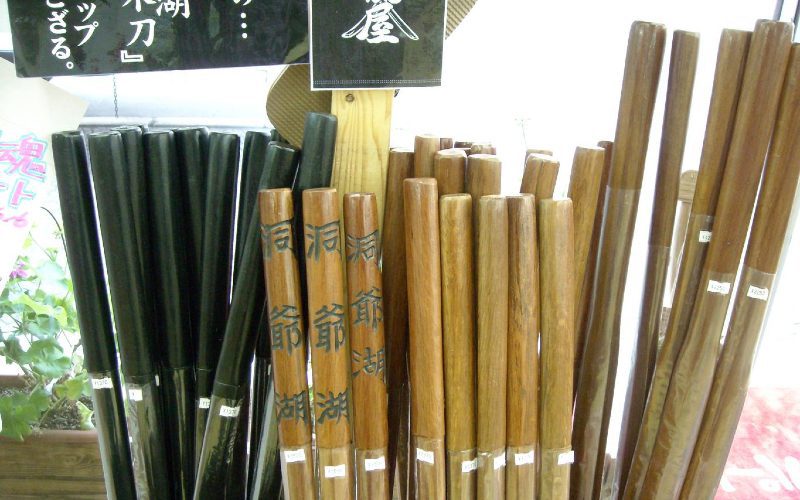
A bokken is a wooden sword used in martial arts, similar to the size and weight of a real Japanese sword. It became popular because it is durable, inexpensive, and nonlethal, making it suitable for practice or competitions. In training, practitioners treat and handle the bokken as if it is a sharp sword, allowing realistic sword fighting without the risk of injury.
We’ve compiled a guide on choosing the best bokken for training, its different types, and where you can get it online.
Different Types of Bokken
The term bokken literally means wooden blade and refers to any type of wooden sword used in Japanese martial arts. In Japan, the term bokuto usually refers to a wooden katana. In the West, the terms bokken and bokuto are often used interchangeably to refer to wooden swords.
1. Daito Bokken
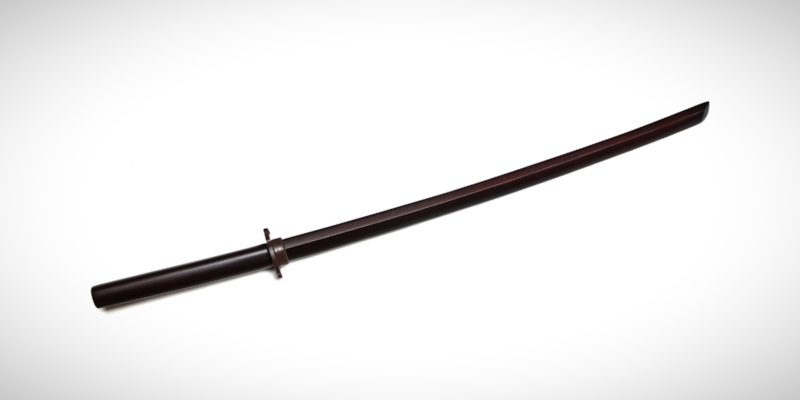
A daito bokken is a long wooden sword, usually a katana sword, with a blade length of over 60 centimeters. In Japan, many practitioners train with wooden swords without armor, but in some countries, especially in Australia, practitioners prefer to use a bamboo sword called shinai with protective armor.
Modern aikido practitioners use the wooden sword especially when practicing knee-walking and falling techniques. In iaido, practitioners utilize a wooden katana, but rely on an iaito or unsharpened katana for their saya or scabbard practice. Kendo practitioners still prefer the shinai for sparring practice and competitions, but they also use a bokken when training in the dojo.
2. Shoto Bokken
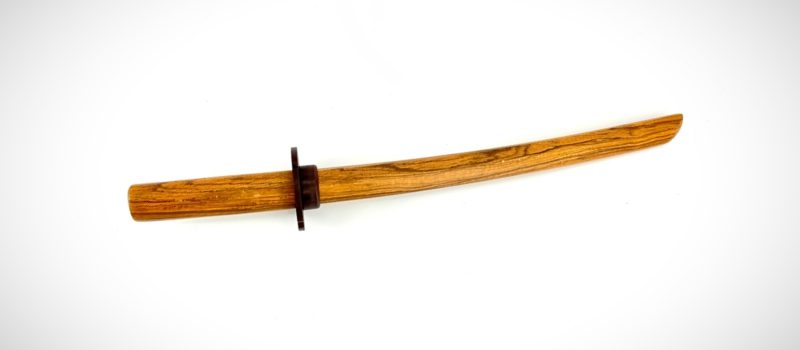
The term shoto refers to a short sword such as a wakizashi with a blade length between 30 and 60 centimeters. Like a long sword, practitioners could also use it in kenjutsu-style cutting, stabbing, and parrying. The Yagyu Shinkage Ryu is one of the schools that focuses on short sword techniques where many of its practitioners use a shoto bokken.
3. Tanto Bokken
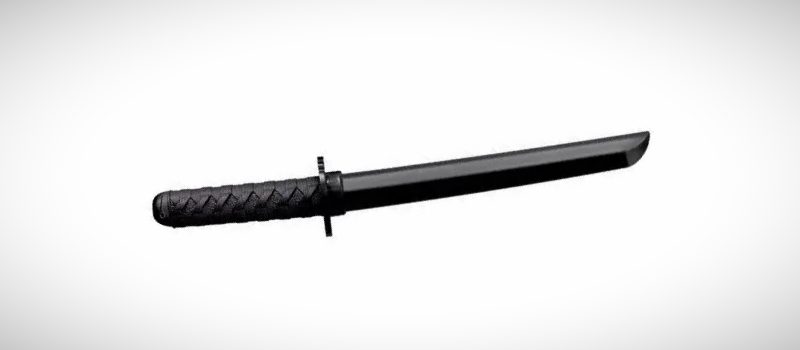
A tanto bokken is a wooden tanto dagger with a blade length of less than 30 centimeters. Martial arts like kenjutsu, aikido, and tanto jutsu utilize a wooden tanto for training. It is essential in kata demonstrations and competitions, allowing practitioners to learn various techniques without the risk of injury.
4. Suburito
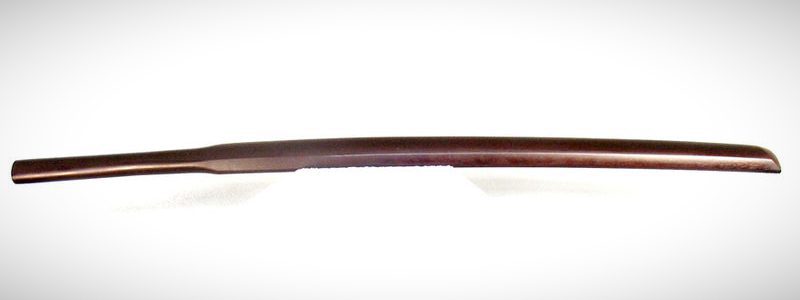
A suburito is a type of bokken used in suburi training, which involves practicing basic sword techniques. The jigen suburito refers to a specific type of wooden sword the Jigen-ryu students use. The Jigen-ryu is a kenjutsu or kendo style of fencing from Kyushu, Japan. Generally, the jigen suburito is heavier than other types of bokken, and swordsmen use it to develop muscle strength when practicing basic cutting and blocking strokes.
The suburito is thicker on the blade part than it is on the handle. However, it is rarely used in fencing exercises with a partner or prearranged forms or kata. Most modern kenjutsu practitioners train in suburi style using bokken instead of an iaito, an unsharpened metal blade or a shinken, a live forged blade.
How to Choose the Best Bokken for Training
When choosing a practice sword, it is important to opt for a bokken that can withstand harsh training. Its durability usually depends on its material and construction.
Here are the factors to consider when choosing a wooden sword:
Type of Wood
A bokken may be constructed from different types of wood, but the most common is Japanese red or white oak. In the West, practitioners prefer red oak because it tends to warp less than the white variety. However, the white oak bokken is sturdier and more expensive than the other. Although both types have a smooth finish, the white oak has finer grains. A high-quality oak bokken is an ideal choice for both beginners and masters.
Some high-quality bokken are made from Japanese sunuke or ebony. Others are also made from American hardwood, including walnut, ironwood, hickory, and persimmon. However, some are also constructed from lighter wood that are not sturdy enough for heavy blows. Cheaper, lighter wood tends to crack, splinter, or crush on impact due to impact from other wooden weapons.
Blade Appearance
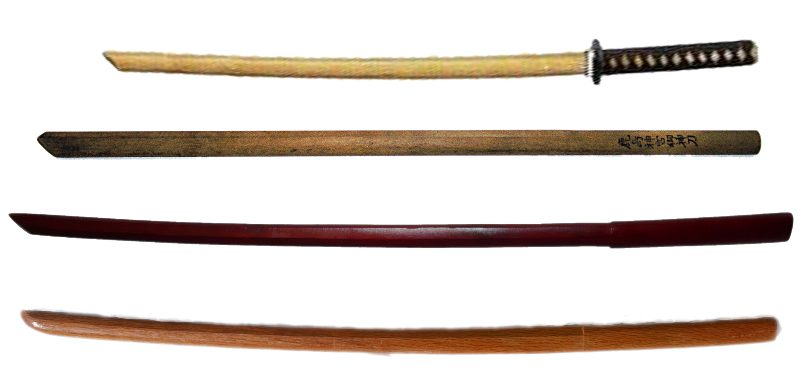
Like real samurai swords, a bokken has a slightly curved wooden blade. It also features a cutting-edge area, an unsharpened back of the blade, and a kissaki-like tip. The bokken is also constructed from a single piece of solid wood. On the other hand, the suburito usually appears more like a piece of lumber than the blade shape of a conventional sword.
Size and Length
A bokken widely varied in size depending on the sword type and height of the practitioner. It typically replicates the size of a Japanese sword such as a katana or a wakizashi, but measurements sometimes depend on specific schools, practices, and competitions.
Weight
The suburito is naturally heavier while the bokken replicates the weight of a Japanese sword. As a practice sword, it should move lightly and feel balanced. However, its weight may vary depending on individual preference. On the other hand, the extra weight of a suburito helps in building muscle strength in the forearms and the rest of the body.
Sword Construction
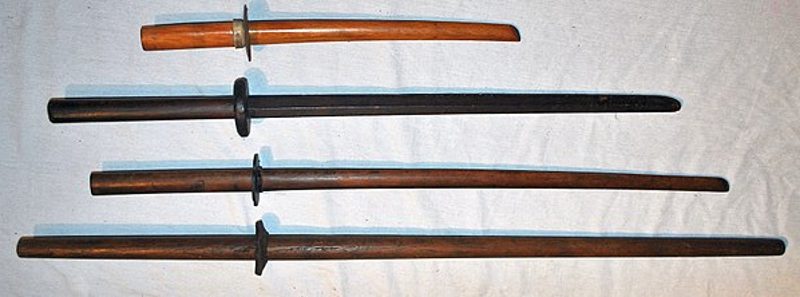
The tsuka or hilt should feel comfortable when gripped, and the tsuba or sword guard should be large enough to cover the entire hand. A wooden sword also comes with a habaki, usually a rubber or plastic collar. Unlike metal blades, a bokken does not have a scabbard or saya and is only kept in a cloth bag for protection. A suburito has the same characteristics as a typical bokken, but does not have a tsuba and is not recommended for sparring with a partner.
Best Bokken Swords Available Online
When buying a training sword, it is best to choose a bokken you can use for solo practice and in contact drills with a partner. Many beginners and masters often opt for an oak bokken, but there are lots of options depending on individual preference.
1. Wooden Bokken
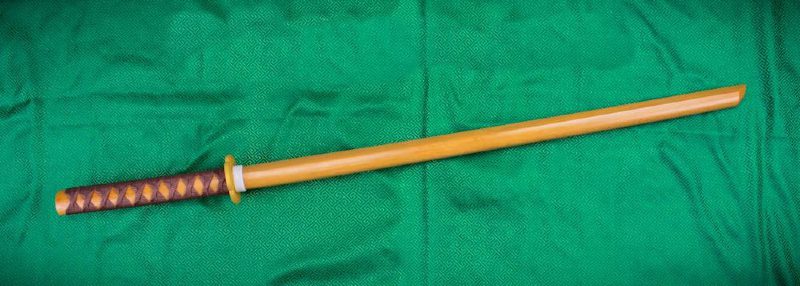
Are you looking for a long wooden sword as a substitute for a katana or tachi? This bokken has an overall length of 100 centimeters and a blade length of 75 centimeters. It features a tsukamaki-inspired hilt commonly seen on samurai swords. It also comes with a plastic tsuba hand guard and a rubber habaki.
This bokken is constructed from durable wood, but is not a Japanese oak. It can be a good option for beginners for solo practice, quick footwork, and light sparring. If you want to channel your inner Miyamoto Musashi, a wooden sword is your best choice. However, it may not be the best bokken for contact drills with a partner.
2. Polypropylene Katana Sword
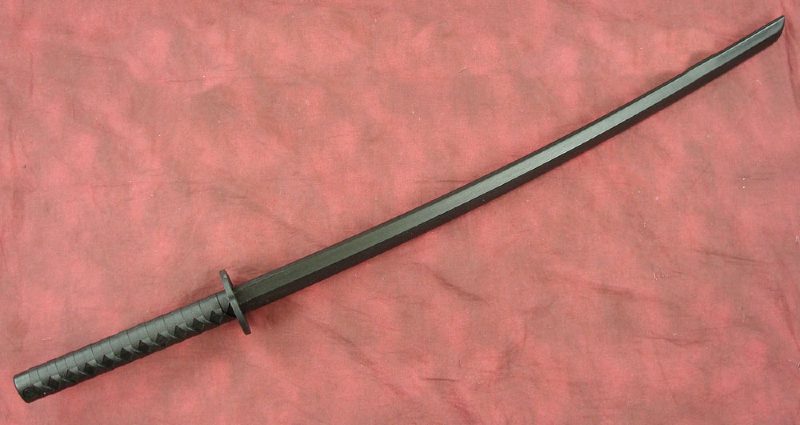
Modern and non-traditional, this practice sword is constructed from polypropylene plastic instead of wood. It has an overall length of 98 centimeters and a blade length of 73 centimeters, the average size of a katana sword. While it may be durable for practice, it hardly replicates the balance and feel of a wooden sword.
This polypropylene katana sword is of high quality and can withstand light sparring practice. Like most bokken, it features the fittings and texture of the tsuka of a Japanese sword. It can also double as a cosplay or costume prop compared to wooden swords.
3. Ninja Bokken

Channel your inner ninja with this wooden ninjato sword. Like modern depictions of a ninja sword, it features a straight blade and a square hand guard. It is constructed from hardwood and is ideal for practicing sword techniques.
This bokken has a blade length of about 61 centimeters and an overall length of 87 centimeters, which is quite long for a ninja sword. Unlike most bokken, this sword is relatively plain. Still, it makes a great training sword in ninjutsu martial arts and cosplay.
4. Carved Dragon Wakizashi Bokken

Are you looking for a training sword that can double as a costume prop? This wakizashi bokken features a hand-carved dragon design on the blade, traditional handle wrapping, and hand guard. As a short sword, it has a blade length of 55 centimeters and an overall length of 76 centimeters.
It is not traditional for martial arts weapons to have decorative blades, so it may not be the best option to use in the dojo. Constructed from high-quality hardwood, it still makes a great training sword for solo practice and light sparring.
5. Tanto Bokken
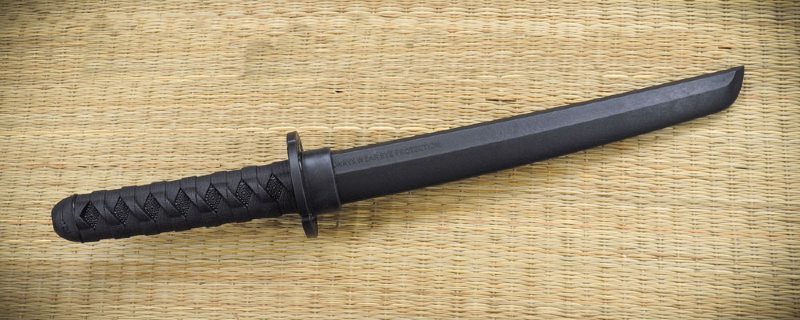
Japanese martial arts especially tanto jutsu, involve the use of a tanto bokken, making this one a perfect choice. It is made from high-quality polypropylene and features a tsukamaki-inspired hilt, tsuba handguard, and a rubber habaki. It has a blade length of about 30 centimeters and an overall length of 46 centimeters, which are quite long for a dagger. Still, it makes a great practice weapon and a costume prop.
Care and Maintenance of Bokken
Proper care and maintenance are essential to maintaining your training sword, protecting it from the elements, and enhancing its performance. Many opt for varnish, drying oil, non-drying oil, or wax to prevent the wood from drying out.
Varnish
A varnished bokken is low maintenance, keeping the wood protected for years. However, it also adds a layer on top of the wooden surface which feels almost plastic and takes away the natural texture of wood. Most bokken comes varnished. If not, many practitioners use oil to prevent the wood from drying out.
Drying Oil and Non-Drying Oil
The application of a drying oil on a bokken gives it the most attractive finish and a great feel on the hands. It penetrates the wood, dries the inside fibers, and protects it from water. The most common are walnut oil, tung oil, and linseed oil. However, these oils usually take several weeks to cure, tend to make the wooden surface appear yellowish, and are highly flammable.
On the other hand, the non-drying oil does not cure, so it remains slippery after application. Many utilize vegetable or mineral oil, though the former tends to go rancid. Some also opt for food-grade mineral oil for wooden swords.
Wax
Applying wax is perhaps the easiest and the most inexpensive way to protect your wooden sword. Many opt for beeswax or candle wax which gives it a better grip on the bokken, preventing it from slipping out of your hands. Unlike oils, it does not penetrate wood fibers, so the protection only lasts as long as the film stays intact.
A Brief History of the Bokken
The use of bokken in training originated from the samurai and became a part of traditional Japanese martial arts until today.
In Samurai Training
During the Muromachi period, from 1338 to 1573, the ryu systems of martial arts developed and the samurai practiced their sword fighting skills using a wooden sword. Apart from preventing injury and death, the bokken also preserved the cutting edges of more expensive samurai blades. However, samurai who fought with wooden swords did not wear protective armor resulting in severe bruising and even occasional broken limbs.
In feudal Japan, the bokken was made from biwa, but a folk superstition made it unappealing for the wooden sword. Many swordsmen believed that an injury caused by a biwa would not heal and would lead to death. While some warriors carefully used them, others refused to wield them.
In Japanese Legend and Folktale
In Japanese folktale, several swordsmen utilized a wooden sword as a weapon of actual combat. Swordsman Ittosai Kagehisa, the founder of Itto-ryu, used a piece of wood, allegedly a bokken, against his rival Migogami Tenzen, who used a sharp steel sword.
The famous legendary swordsman Miyamoto Musashi also defeated his rival Sasaki Kojiro by using a wooden sword carved from a boat oar. He was also renowned for his skill in double swordsmanship, wielding a katana and a wakizashi at the same time.
Conclusion
Carved like a work of art, a bokken replicates the qualities of real Japanese swords. It is widely used in martial arts, from kenjutsu to iaido, aikido, and kendo. Many practitioners prefer wooden swords made from Japanese oak which are the best quality. Still, there are also less expensive options, including ones constructed from American hardwood and polypropylene.
